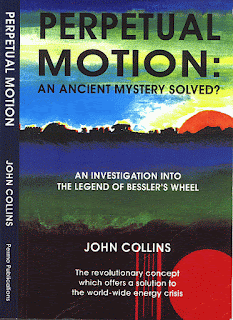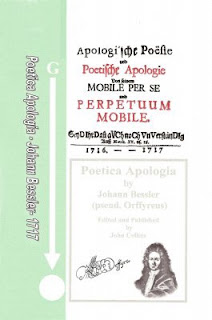He used alphanumerics to provide clues but they only led to further encoded clues. To get his pseudonym, Orffyreus, derived from his name Bessler, he used albam, a simple alphabetic substitution cipher originally used by Hebrew scribes to disguise the names of certain people they mentioned in their writings. Later it was known as the Caesar shift cipher used by the Romans. Today we refer to it as ROT13
He also used numbers in his drawings to achieve a certain total which would reveal a geometric design. He was fascinated by chronograms and produced numerous examples. In an ordinary sentence he used certain Roman numerals which could be obtained from letters of the alphabet, to provide dates.
He used other codes but nowhere to my knowledge does he even hint at numerology. I see that , ‘the English word numerology is of recent origin, coming into existence around 1910 A.D. (dictionary.com). It is a combination of the Latin word "numerus," meaning numbers, and the ending "logy," which is used to designate the study or science of something. The definition of numerology, therefore, is the general study of numbers.”
I looked briefly into numerology and although it is a popular among some people it is generally regarded as a superstition. This is one reference among many that read,
‘ Actually the numerology I use is based on origins of the contemplations of philosopher Pythagoras back in ancient Greece. He was not just a mathematician, but looked at what was behind numbers. The study of the vibration and effect of numbers is in the Bible (like in the Kabbalah), and pondered by philosophers, theologians and scientists way back in time. The actual onset of modern numerology, where each number has a certain meaning and the letters of the alphabet is assigned to a certain number, has most probably become standardized into a system in mid 1800s. Pythagoras and Chaldean methods are the most popular systems.”
I’m not expressing an opinion on numerology, just that I remain sceptical, but I would be delighted to be provided with proof of its efficacy. This would be nigh on impossible because all results could be coincidental. The interpretation of names, dates of birth and astrology are all in the same grouping along with religious belief systems - a matter of personal conviction.
So if modern numerology only became established in the mid 1800s it seems unlikely that Bessler would have used it. Gematria, on the other hand seems a more likely system used by Bessler. According to Wikipedia, ‘ an alphanumeric code of assigning a numerical value to a name, word or phrase based on its letters. A single word can yield multiple values depending on the cipher used.’.
It is clear that Bessler was familiar with the albam/atbash system used by the Hebrews and therefore other alternative but similar systems, too complex to deal with here but certainly studied by Bessler, in my opinion. But even acknowledging his personal knowledge of such systems, there seems little of value in deciphering his works to try to get additional meanings from them. Such techniques reveal themselves as nonsensical words.
There is one place where such elaborate methods might hide meaningful information and that is within the ‘Declaration of Faith’, in Apologia Poetica, chapter 55. There he presents about 141 Bible verse references with differing abbreviations, and quotations for verses a few of
I think that numbering his fingers etc, in aid of a numerological interpretation is a road to nowhere. The gesture itself may be designed to send a message, but perhaps it was just another example of Bessler’s delight in adding mystification to engender curiosity in the genuinely encoded material.









